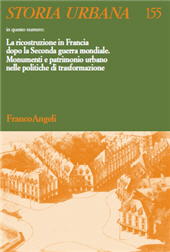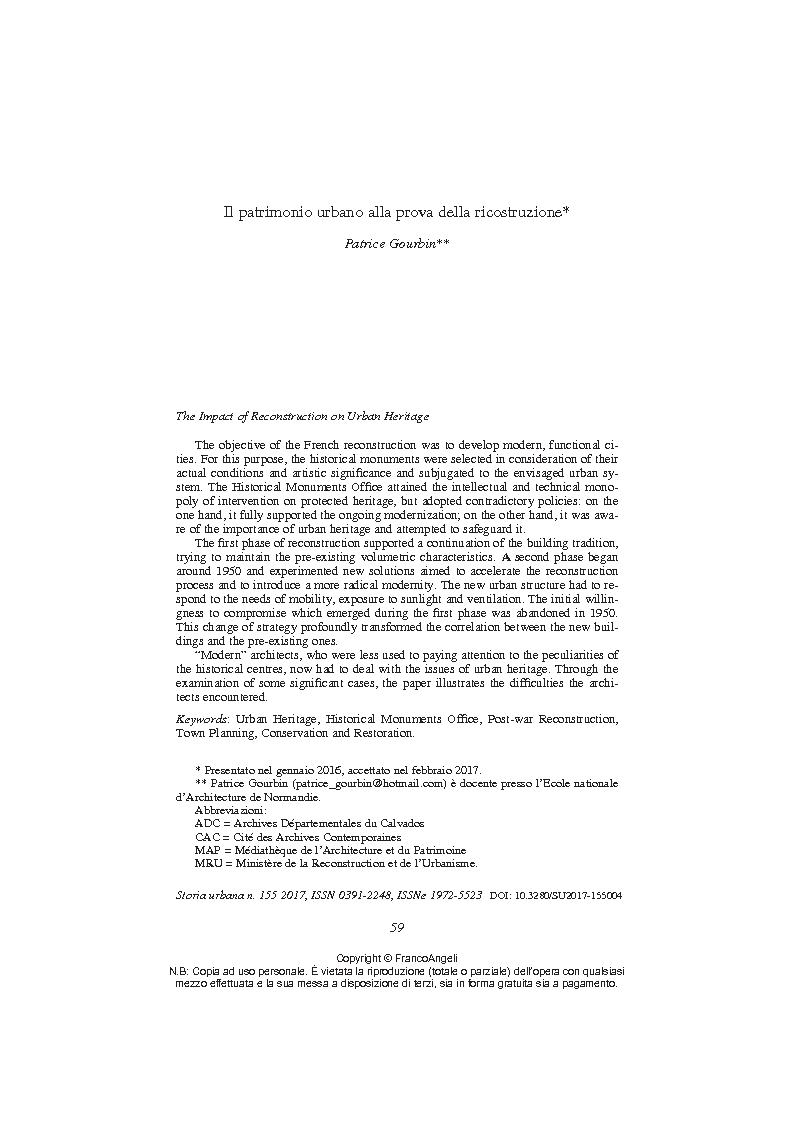Il patrimonio urbano alla prova della ricostruzione
59-80 p.
The objective of the French reconstruction was to develop modern, functional cities. For this purpose, the historical monuments were selected in consideration of their actual conditions and artistic significance and subjugated to the envisaged urban system. The Historical Monuments Office attained the intellectual and technical monopoly of intervention on protected heritage, but adopted contradictory policies: on the one hand, it fully supported the ongoing modernization; on the other hand, it was aware of the importance of urban heritage and attempted to safeguard it. The first phase of reconstruction supported a continuation of the building tradition, trying to maintain the pre-existing volumetric characteristics. A second phase began around 1950 and experimented new solutions aimed to accelerate the reconstruction process and to introduce a more radical modernity. The new urban structure had to respond to the needs of mobility, exposure to sunlight and ventilation. The initial willingness to compromise whi
ch emerged during the first phase was abandoned in 1950. This change of strategy profoundly transformed the correlation between the new buildings and the pre-existing ones. "Modern" architects, who were less used to paying attention to the peculiarities of the historical centres, now had to deal with the issues of urban heritage. Through the examination of some significant cases, the paper illustrates the difficulties the architects encountered. [Publishers' text].
Forma parte de
Storia urbana : rivista di studi sulle trasformazioni della città e del territorio in età moderna : 155, 4, 2017-
Artículos del mismo número (disponibles individualmente)
-
Información
Código DOI: 10.3280/SU2017-155004
ISSN: 1972-5523
MATERIAS
KEYWORDS
- Urban Heritage, Historical Monuments Office, Post-war Reconstruction, Town Planning, Conservation and Restoration



